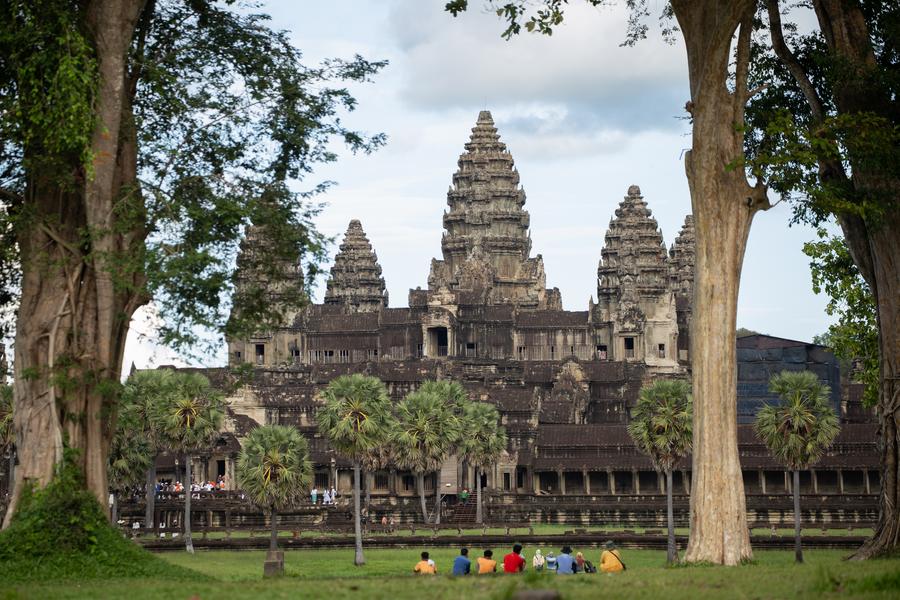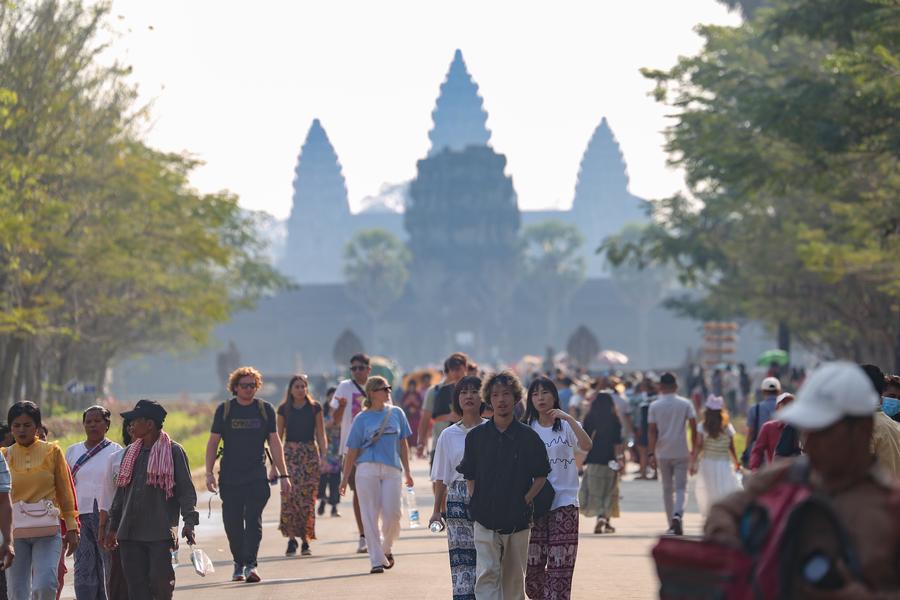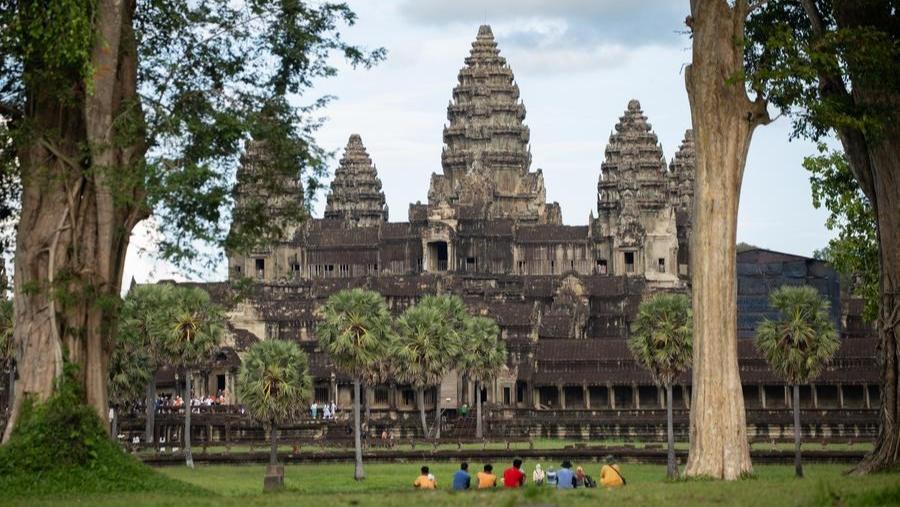Tourists visit the Angkor Wat temple in Siem Reap province, Cambodia on Oct. 18, 2024. (Photo by Sao Khuth/Xinhua)
Cambodian Minister of Tourism Huot Hak said the growth of Chinese tourists is an important opportunity, not only to boost the development of the tourism sector, but also to create investment opportunities in other sectors.
PHNOM PENH, Nov. 11 (Xinhua) -- Cambodia recorded an almost 50 percent rise in the number of Chinese tourists during the first nine months of 2024, said a Cambodian Ministry of Tourism's report released on Sunday.
A total of 607,542 Chinese visitors traveled to the Southeast Asian country during the January-September period this year, up 49.8 percent from 405,514 over the same period last year, the report said.
The number of Chinese tourists accounted for 12.65 percent of the total 4.8 million international tourist arrivals to Cambodia during the first nine months of this year, the report said, adding that China was the third biggest source of the foreign holidaymakers to the kingdom after Thailand and Vietnam.
Cambodian Minister of Tourism Huot Hak said the growth of Chinese tourists is an important opportunity, not only to boost the development of the tourism sector, but also to create investment opportunities in other sectors.
Tourists visit the Angkor Wat in Siem Reap province, Cambodia on Feb. 10, 2024. (Photo by Sao Khuth/Xinhua)
"Cambodia is projected to receive 7 million international tourists including more than 2 million Chinese tourists in 2025," he said.
Tourism is one of the four pillars supporting Cambodia's economy, in addition to garment, footwear, and travel goods export, agriculture, and construction and real estate.
The country received 5.45 million international tourists in 2023, generating a gross revenue of 3.08 billion U.S. dollars, according to the Ministry of Tourism.
Cambodia is well known for its four UNESCO-listed world heritage sites, namely the Angkor Archaeological Park in the northwestern Siem Reap province, the Temple Zone of Sambor Prei Kuk in central Kampong Thom province, and the Temple of Preah Vihear and the Koh Ker Archaeological Site in the northwestern Preah Vihear province.






 A single purchase
A single purchase









